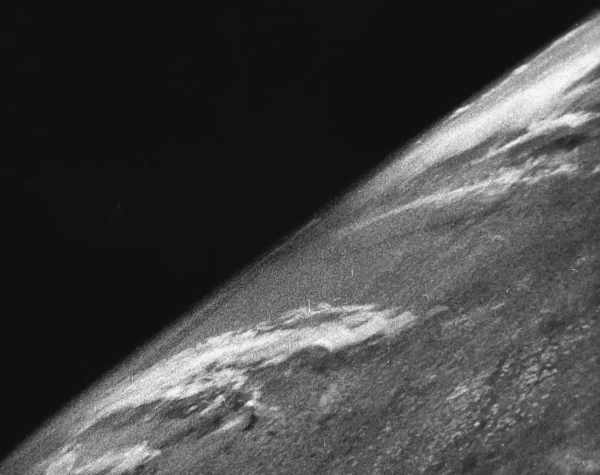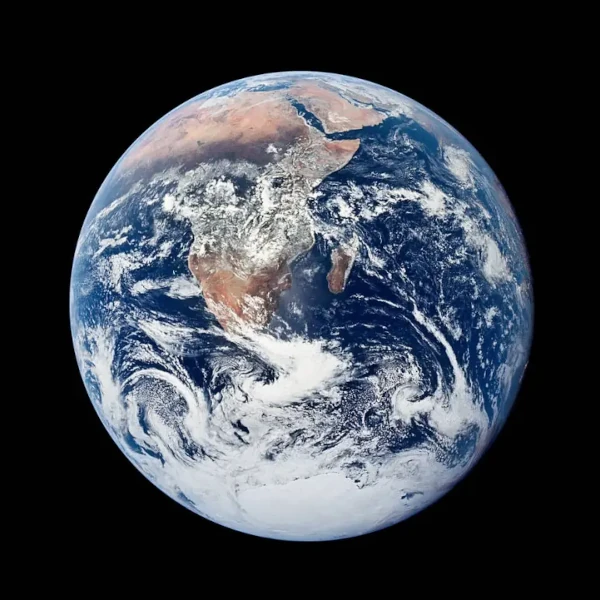
There are several "firsts" depending on the criteria: the first photograph beyond the Kármán line in 1946, the first image transmitted from a satellite in 1959, the first full Earth disk from geostationary orbit in 1966, the first color image of the entire disk in 1967, the first view of Earth from lunar orbit in 1966, the first Earthrise photographed by humans in 1968, and the famous Blue Marble in 1972. Each marked a distinct technical and cognitive milestone.
N.B.:
The Kármán line is an altitude of 100 km above sea level, separating Earth's atmosphere from space. Beyond this line, the air is too thin, and the horizontal speed required to maintain flight exceeds orbital velocity, causing the craft to leave Earth and orbit instead.
N.B.:
Earth observation satellites are mainly divided into two categories: low Earth orbit (LEO) satellites, a few hundred kilometers above the surface, which provide high spatial resolution for detailed surface images and precise measurement of local phenomena; and geostationary orbit (GEO) satellites, at about 36,000 km, which remain fixed relative to the surface and allow continuous monitoring of global weather and climate phenomena.
| Year | Platform / Mission | What is "First" | Technical Details | Reference |
|---|---|---|---|---|
| 1946 | V-2 #13 (White Sands) | First photo of Earth from space (> 100 km) | 35 mm camera, altitude \(\sim 105\ \mathrm{km}\), recovered film | TIME; V-2 No. 13 |
| 1959 | Explorer 6 | First image transmitted by a satellite | Alt. \(\sim 27,000\ \mathrm{km}\), Pacific clouds, low resolution | NASA NSSDCA; NASA |
| 1966 | ATS-1 (Spin-scan) | First full disk from geostationary orbit | First "global weather" in a single shot | NOAA/NASA via Commons |
| 1966 | Lunar Orbiter 1 | First view of Earth from lunar orbit | Robotic "Earthrise" image, restored in 2008 | NASA LOIRP; The Planetary Society |
| 1967 | ATS-3 | First color image of the entire disk | Color camera, operational use in meteorology | BAMS 1968; The Planetary Society |
| 1968 | Apollo 8 | First Earthrise photographed by humans | Photo by Bill Anders, lunar orbit, color | NASA; Earthrise |
| 1972 | Apollo 17 | Blue Marble: Full Earth disk by humans | Photo AS17-148-22727, southern illumination | NASA; The Blue Marble |
Main sources: TIME – 1946 V-2; NOAA/NASA – ATS-1; BAMS 1968 – ATS-3; NASA – Lunar Orbiter 1; NASA – Apollo 8; NASA – Apollo 17.

Today, our view of Earth has become immediate, global, and continuous. It is no longer the result of sporadic space missions but comes from a dense network of observation satellites that monitor the planet 24/7.
These systems produce globally updated maps in near real-time, track extreme weather phenomena, deforestation, ice melt, and variations in ocean currents. The combination of observations from low Earth orbit (LEO) and geostationary orbit (GEO) provides both fine details and continuous planetary coverage.